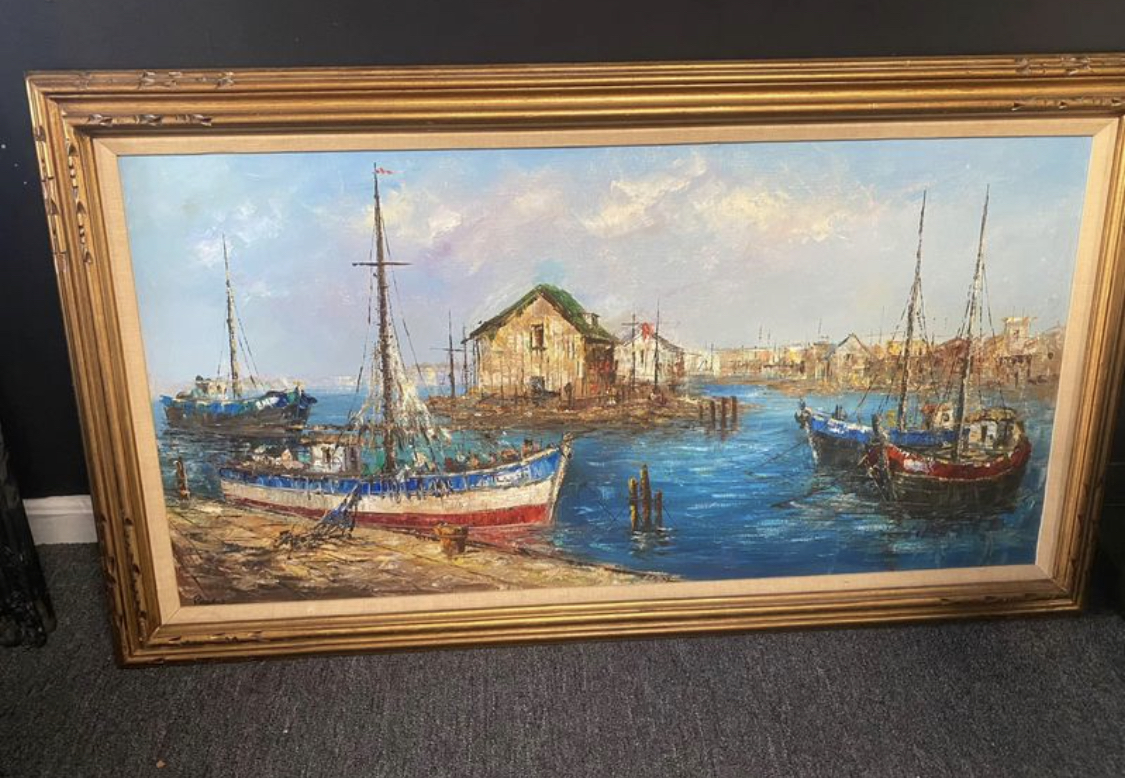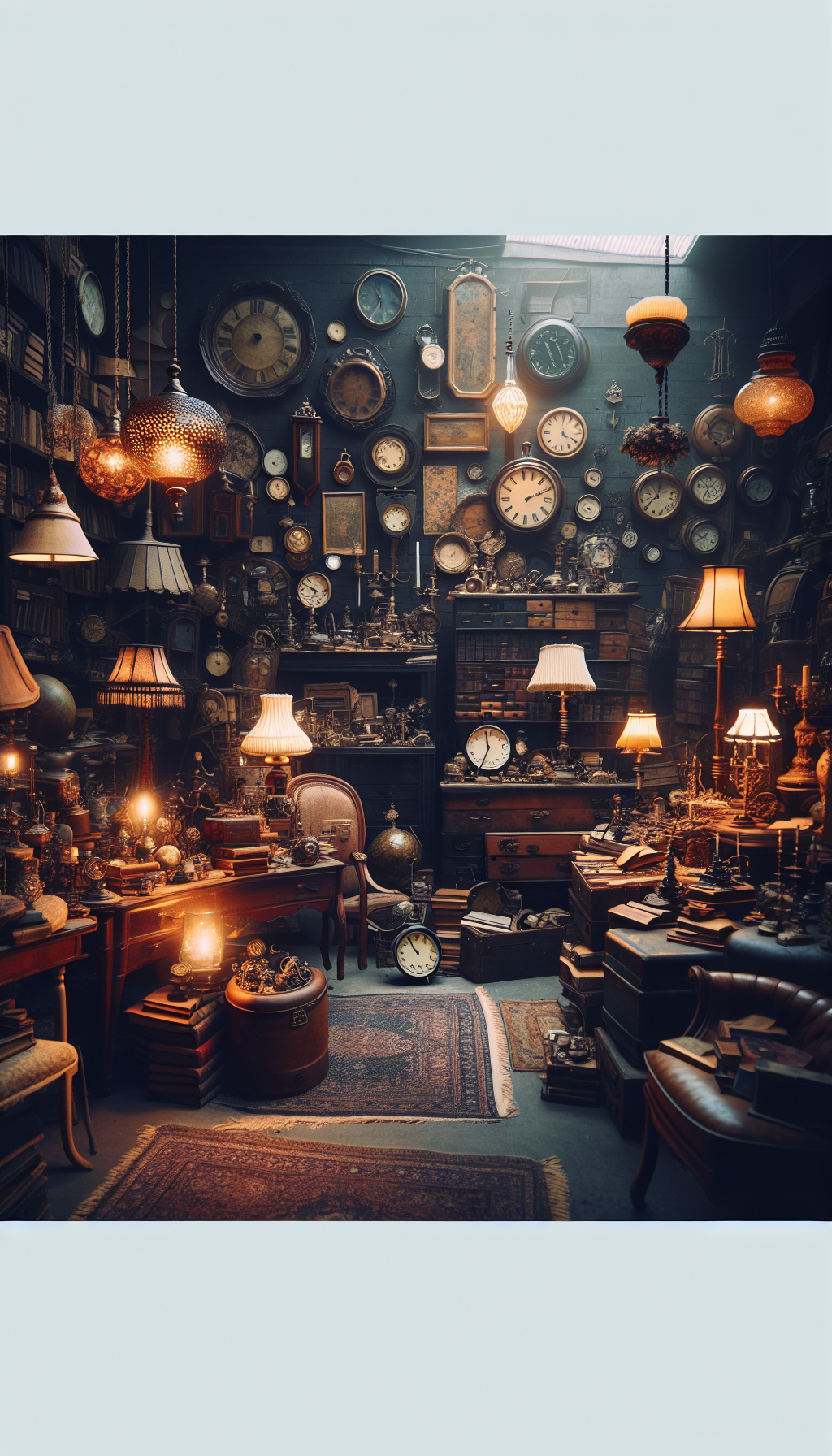6373d7a16a9b3
Serious collectors and enthusiasts know that the difference between a guess and a grounded appraisal is method. Whether you’re assessing a folk art painting, a Georgian chest, or a studio pottery vase, the path to a credible value runs through documentation, condition, comparables, and context. This guide lays out a practical, repeatable approach you can apply at the workbench or the library table—complete with a sample cataloging schema and a concise checklist you can use for every item in your collection.
Value Types and When to Use Them
Appraisals are built for a specific purpose. Define that purpose first; it determines the value standard, research scope, and the market context you’ll analyze.
Fair Market Value (FMV): The price a willing buyer and seller would agree upon, neither under compulsion, both with reasonable knowledge of relevant facts. FMV is commonly used for charitable donations, estate tax, and equitable distribution. It reflects typical transaction levels in the appropriate market (often auction or secondary trade, not necessarily retail).
Retail Replacement Value (RRV): The cost to replace the item with another of like kind and quality in a reasonable amount of time in the retail market. Insurers rely on RRV because it accounts for retail markups, sourcing time, and dealer expertise. RRV is usually higher than FMV.
Auction Value: Useful when a sale is planned at auction. Distinguish between:
- Hammer price: The winning bid.
- Buyer’s premium: A percentage added to the hammer paid by the buyer.
- Seller’s net: Hammer minus seller’s commission and fees. For a seller, net proceeds matter; for a buyer, total acquisition cost (hammer plus premium, tax, and fees) matters.
Liquidation or Forced Sale Value: What an item would bring under compulsion or under time constraints. Lower than FMV due to urgency and reduced marketing.
Pick the value definition aligned with the assignment. Mixing standards (e.g., using retail comps for a donation FMV) is a common and costly mistake.
Provenance and Documentation: Building the Paper Trail
Provenance—the documented history of an object’s ownership, exhibitions, and publications—adds both authenticity assurance and market desirability. Assemble and verify it with rigor.
Chain of ownership: Gather invoices, receipts, wills, import/export documents, customs declarations, and correspondence. Dates, names, and addresses help establish continuity. Gaps are normal; document them transparently rather than speculating.
Exhibition and publication history: Identify gallery labels, exhibition tags, catalogue citations, and references in monographs. These can materially impact value by increasing visibility and confidence.
Maker’s marks and inscriptions: Photograph and transcribe any signatures, hallmarks, foundry stamps, edition numbers, paper watermarks, patent stamps, serial numbers, or workshop labels. Use standard references for hallmarks and signatures to verify chronology and style.
Negative evidence: The absence of expected features (e.g., a period hallmark missing from a supposed 18th-century silver piece) can be as informative as the presence of marks. Note absences explicitly.
Oral histories: If previous owners offer recollections, record them, then seek corroboration. Affidavits help but do not substitute for documentary proof.
Labels and back-of-work data: For paintings and prints, document stretcher, frame, and verso labels. For furniture, check drawer bottoms, backboards, and underside for chalk marks or inked inventory numbers.
Stability of provenance matters: a short but verifiable chain usually beats a romantic story without paper. Protect documentation with high-resolution scans and offsite backups.
Authentication and Condition: What You Can (and Shouldn’t) Do
A well-observed condition report underpins both valuation and conservation decisions. Be systematic and conservative in claims.
Visual examination: Start with good, raking, and oblique light. Use a 10x loupe for tool marks, craquelure patterns, pigment granularity, and surface disturbances. Blacklight (UV-A) can reveal overpaint, later varnishes, and repairs; interpret cautiously, as some original materials fluoresce.
Materials and construction clues:
- Furniture: Hand-cut dovetails show irregular tails and scribe lines; machine-cut dovetails are uniform. Saw marks perpendicular to the cut suggest circular saws (post mid-19th century in many contexts). Nail types (wrought, cut, wire) and screw head forms can date construction or repairs.
- Works on paper: Look for plate marks on intaglio prints, deckle edges, laid vs wove paper, and watermarks. Foxing, toning, and mat burn indicate environmental issues and prior framing.
- Paintings: Craquelure patterns consistent with age and medium; canvas weave; ground layers visible at edges; stretcher types and keys. Check whether the signature sits atop varnish (often suspect) or within the paint layers.
- Ceramics and glass: Pontil marks, mold seams, glaze pooling, kiln grit, crazing patterns, and later drilling (e.g., lamp conversions).
Condition grading: Separate original elements from later additions. Note:
- Structural issues: breaks, splits, warpage, join failure, panel cracks.
- Surface issues: abrasion, overcleaning, overpaint, retouching, re-gilding, wax fills, re-polishing.
- Stability: active flaking, powdery patina, pest activity, salt efflorescence. Mark as stable, unstable, or active.
Reversibility and ethics: Any conservation should be documented, reversible where possible, and minimal. Over-restoration can reduce value by erasing original surfaces (e.g., patina on bronze or oxidation on wood), which collectors prize.
Scientific testing: Pigment analysis, dendrochronology, thermoluminescence, and spectroscopy can support authentication but should be conducted by qualified professionals with chain-of-custody. Do not remove samples yourself.
Record everything before any cleaning. Never use household cleaners on antiques; a light dust with a soft brush is the upper limit before consulting a conservator.
Comparables and Market Analysis: From Data to Value
Your comps determine your credibility. Select and adjust them with discipline.
Selecting comparables:
- Match maker/attribution, period, medium, size, subject, and technique.
- Align condition and restoration level.
- Prefer items with verified provenance, reputable venues, and clear cataloging.
- Use multiple market tiers where relevant: regional auctions, national auctions, gallery retail, and private sales. Note which tier your value definition requires.
Adjusting comps:
- Date of sale: Markets move. Consider time adjustments in rising or declining segments; median-based trends reduce the influence of headline outliers.
- Size and subject: For artists, certain subjects or periods carry premiums. Size effects are not linear; be cautious with per-square-inch heuristics.
- Condition and completeness: Subtract for losses, over-restoration, or missing parts; add for exceptional originality (e.g., original finish, untouched patina).
- Provenance and literature: Publication and exhibition history may warrant premiums; quantify conservatively unless there is a clear pattern in the dataset.
- Transaction costs: Auction buyer’s premiums and seller’s commissions affect observed prices. Normalizing to hammer-only or to total price must be consistent across comps and aligned with your value standard.
Analyzing the set:
- Use medians rather than means for small, skewed datasets.
- Exclude clear outliers with reasoned justification.
- Present a value range with a reasoned point estimate (e.g., midpoint or weighted towards the most similar comps).
Market context:
- Liquidity: Niche categories can be thinly traded; allow wider ranges and longer exposure times.
- Seasonality: Some categories peak seasonally; auction calendars matter.
- Macro factors: Currency shifts and economic cycles influence cross-border categories (e.g., design, modern art).
Avoid cherry-picking headline results. A transparent comp set—even if it yields a lower estimate—is more persuasive than an optimistic single datapoint.
Cataloging and Workflow: Using 6373d7a16a9b3 as a Model Record
Consistent recordkeeping is the backbone of a collection. Assign each object a unique ID; for example, 6373d7a16a9b3 can be your internal code for a specific item. Keep the format uniform across the collection.
Suggested catalog fields for ID 6373d7a16a9b3:
- Object: e.g., Side chair, ladderback
- Maker/Attribution: e.g., Attributed to Samuel McIntire (1757–1811)
- Culture/Period: e.g., American Federal, c. 1800–1810
- Materials: e.g., Mahogany with inlaid satinwood
- Dimensions: H x W x D in cm and inches (unframed vs framed for artworks). Measure to the nearest 0.5 cm or 1/4 inch; note seat height for chairs.
- Marks/Labels: e.g., Pencil inventory “No. 27” under seat; 20th-c. dealer label on underside.
- Provenance: List in chronological order with dates and sources.
- Literature/Exhibitions: Cite catalogues, articles, or shows.
- Condition: Structured notes separating structural, surface, and stability observations. Include known restorations with estimated dates.
- Images: Front, back, sides, details of joinery/marks; include a scale. Name files consistently (e.g., 6373d7a16a9b3_front_v1.jpg).
- Environment: Storage/display conditions (temp, relative humidity, light exposure).
- Value Assignment: Value definition (FMV, RRV, etc.), intended use, effective date, comp summary.
- Appraiser/Researcher: Name, credentials, and date of report.
- Restrictions/Notes: Legal restrictions, CITES, export considerations.
Photographing tips:
- Use diffuse daylight or color-corrected lighting.
- Include a color checker and a scale where possible.
- Shoot the back and hidden areas—buyers and appraisers care about what they can’t see from the front.
- Keep angles square to reduce distortion; note if wide-angle lenses are used.
Report structure basics (especially in the U.S.):
- Purpose and intended use of the appraisal.
- Value definition and market level.
- Scope of work and assumptions/limiting conditions.
- Object description and analysis.
- Comparable data with reasoning for adjustments.
- Value conclusion as a range and effective date.
- Certification statement. If you intend to meet USPAP, ensure current compliance and disclose any conflicts of interest.
Ethics: Avoid appraising items you are simultaneously offering to buy or sell; disclose any prior involvement with the object or market participants.
When to Seek Professional Help
Enthusiasts can do a lot: assemble provenance, conduct initial condition assessments, and build comp sets. Bring in specialists when:
- The object’s value may materially affect taxes, insurance, or estate distributions.
- Authentication is uncertain or contested, especially for artists with active authentication boards or catalogue raisonnés.
- Scientific testing could change attribution or period.
- Conservation issues are active or complex (flaking paint, structural instability, pest damage).
- Legal or regulatory issues are at play (cultural property laws, CITES for ivory/tortoiseshell, export restrictions).
Vetting professionals:
- Credentials and affiliations (e.g., appraiser organizations, conservation bodies).
- USPAP compliance for U.S. assignments.
- Category expertise and recent casework.
- Independence and conflict disclosures.
- Clear fee structure (avoid percentage-of-value fees for appraisals to reduce bias).
Practical Appraisal Checklist
Use this concise list every time you handle a new object.
Identify the assignment
- Define intended use (insurance, sale, donation, estate).
- Select the correct value definition (RRV, FMV, etc.).
- Set the effective date.
Capture the object
- Assign unique ID (e.g., 6373d7a16a9b3).
- Photograph front/back/details with scale.
- Measure accurately; record framed vs unframed.
Document provenance
- Collect invoices, labels, and correspondence.
- List ownership chain chronologically.
- Note exhibition/publication history.
Assess condition
- Inspect under good light and with a loupe; use UV if appropriate.
- Separate structural and surface issues; mark stability.
- Do not clean; consult a conservator for treatment.
Research and verify
- Identify marks, signatures, watermarks, and materials.
- Check standard references and catalogues raisonnés.
- Confirm attributions and dates with construction/material clues.
Build comparables
- Select like-for-like comps; note venue and dates.
- Normalize for buyer’s premium/commissions consistently.
- Adjust for size, condition, provenance; prefer medians.
Conclude and report
- Present a value range with reasoning.
- State assumptions, scope, and limiting conditions.
- Save report, images, and backups to redundant storage.
Plan next steps
- Conservation recommendations with estimated costs.
- Insurance or sale strategy aligned with the value conclusion.
- Calendar appraisal update (e.g., every 3–5 years for insurance).
FAQ
Q: What’s the practical difference between FMV and insurance replacement value? A: FMV reflects typical secondary-market transaction prices under normal conditions, often evidenced by auction and dealer sales. Insurance replacement value reflects the cost to replace the item in the retail market within a reasonable time, including dealer markups and sourcing effort. RRV is commonly higher than FMV and is used for scheduling insurance; FMV is used for donations and estates.
Q: My item’s provenance is incomplete. Can it still be appraised? A: Yes. Document what you know, note the gaps, and avoid speculation. Incomplete provenance may reduce value or increase risk discounts, especially in high-fraud categories, but a well-supported description and comp set can still yield a credible appraisal. Continue research; new documentation can materially change value.
Q: How much do restorations affect value? A: It depends on category and quality of work. Professional, reversible conservation that stabilizes an object often preserves value. Over-restoration (e.g., aggressive refinishing of period furniture, heavy overpaint on canvases) can reduce value sharply. Adjustments are stronger in categories where originality carries a premium.
Q: Should I clean an antique before appraisal or sale? A: No. Surface dirt can be documented; original finishes and patina should not be disturbed. Cleaning may remove evidence needed for authentication or reduce value. Consult a qualified conservator for any treatment after the appraisal.
Q: How often should I update an insurance appraisal? A: Typically every 3–5 years, or sooner in volatile markets or after significant conservation work. Updates should reassess comps and market conditions, not just apply a blanket percentage increase.
A methodical approach turns fragments of information into a defensible value. Treat every object as 6373d7a16a9b3—an asset with a unique identity, a documented history, and a clear place in the market—and your appraisals will stand up to scrutiny from insurers, buyers, and fellow collectors alike.




